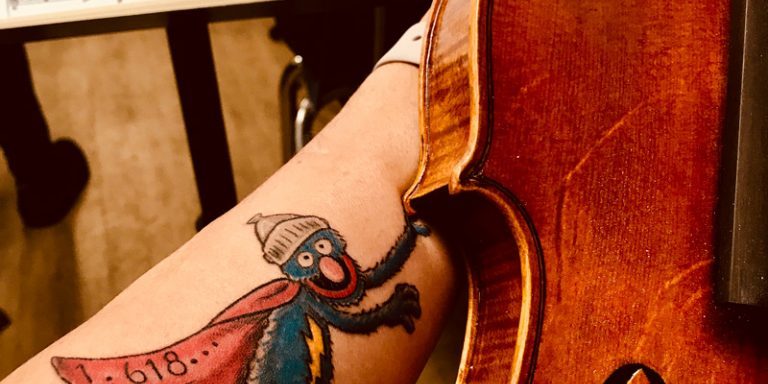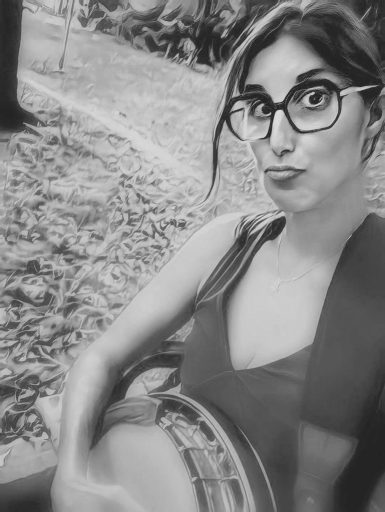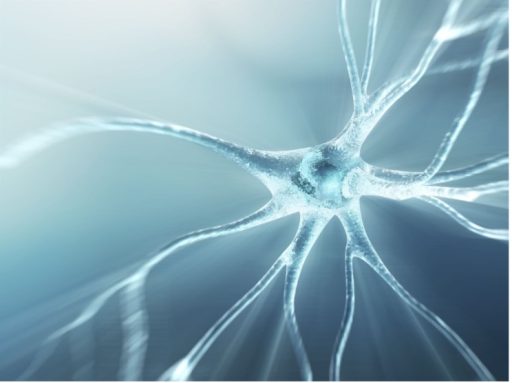
A WORKOUT FOR MUSICIANS IN PAIN
As a therapist working with musicians for over 30 years—and a musician myself—I created a workout plan for a patient struggling with playing-related pain. It quickly became clear: this routine could help many more.
Focused on neural tension, compression, and overuse injuries like tendonitis, the exercises are designed to support the unique physical demands of musicians.
But movement alone isn’t always enough.
Masssage therapy plays a vital role in reducing pain, releasing restricted tissue, and reinforcing healthy patterns. Combined with targeted exercise, it’s a powerful approach to staying pain-free and performance-ready.
👉 Book an appointment to add manual therapy to your routine and get back to playing with less pain.
Clinical Goals
- Reduce brachial-plexus compression by improving cervical/thoracic mobility and scapular stability.
- Unload medial & lateral epicondyles through graded tendon loading and balanced forearm strength.
- Maintain playing endurance for guitar/violin while tissues remodel.
Frequency guide
• Daily: Neural glides + postural mobility (≈10 min)
• 3×/week: Strength circuit (≈20 min) with 24 h rest between sessions
• Pre-practice: 5 min dynamic warm-up (outlined below)
• Post-practice: Quick recovery stretch (marked ✦)
- Warm-Up (Before playing or strength work)
| Drill | Reps/Time | Key Cues |
| Cat-Camel | 10 cycles | Segment spine; inhale flex, exhale extend |
| Arm Circles | 15 fwd / 15 rev | Maintain long neck, low ribs |
| Wall Scapula Slides ✦ | 8–10 | Slide elbows/wrists up wall, keep low back flat |
| Finger Tremolo Shake ✦ | 15 s | Rapid finger flicks; relax forearm tone |
2. Daily Neural Mobility (flossing): stop at mild stretch/no pain
| Nerve Glide | Sets × Reps | Description |
| Median “Guitar String” Glide | 2 × 10 | Shoulder abducts 90°, elbow/wrist extended, slowly thumb to temple → straighten |
| Ulnar “Violin Bow” Glide | 2 × 10 | “OK” sign around eye, elbow forward, gently open/close hand |
| Radial “Waiter Tip” Glide | 2 × 10 | Arm at side, internally rotate, flex wrist/fingers → neutral |
3. Stretch & Mobility Block
Do daily (hold 30 s, 2 rounds). ✦ = nice post-practice reset.
| Stretch | Side | Focus |
| Scalene lateral neck lean ✦ | L / R | Ear to shoulder, opposite arm behind back |
| Pec Minor doorway ✦ | L / R | Elbow 90°, step through |
| First-rib self-depression (towel) | L / R | Towel over shoulder, pull down gently while breathing |
| Wrist Extensor (lateral epi) ✦ | L / R | Elbow straight, palm down, flex wrist with other hand |
| Wrist Flexor (medial epi) ✦ | L / R | Elbow straight, palm up, extend wrist/fingers |
4. Strength Circuit (3 × week)
| Exercise | Phase 1 (Week 1-2) | Phase 2 (Week 3-6) | Comments |
| Isometric Wrist Extension | 3 × 30 s press vs. other hand | Replace with Eccentric Wrist Extension 3 × 15 (2 kg) | Neutral grip; stop if <3/10 pain |
| Isometric Wrist Flexion | 3 × 30 s | Eccentric Wrist Flexion 3 × 15 (2 kg) | Same guideline |
| Supinated Banded Rows | 3 × 12 | Increase band or dumbbell 3 × 15 | Activate lower traps |
| Prone “Y” + “T” | 3 × 8 each | Add 0.5-1 kg plates 3 × 10 | Thumbs up, chin tucked |
| Serratus Wall Slide + Punch | 3 × 10 | Add light ankle weight on wrists | Emphasize upward rotation |
| Scapular Depression Shrug | 3 × 12 | Hold 2 s at bottom | Use resistance band under feet |
| Grip Putty Squeeze | 3 × 15 | Heavier putty 3 × 20 | Keep wrist neutral |
* each exercise can be done once to fatigue, or using the repetitions suggested.
5. Playing Ergonomics & Recovery Tips
- Instrument height & angle: Violin shoulder rest and guitar strap should let elbows sit 30-45° from torso which prevents elevated scapulae.
- Micro-break rule: 5-second shake-out every 5 minutes of scales/practice.
- Night positioning: Hug a pillow to keep shoulders neutral; avoid overhead arm sleeping.
- Ice-massage: 5 min over epicondyles post-session if reactive soreness rises.
- Load management: Cap practice to pain-free duration; increase no more than 10% per week.
PROGRESS MARKERS
- Week 2: Pain <3/10 with daily tasks, full cervical rotation.
- Week 4: Able to play 30 min sets symptom-free.
- Week 6-8: 90 min rehearsal tolerated; strength circuit weights up 20-30%.
If symptoms plateau >2 weeks or neurogenic signs worsen (numbness, night pain, grip loss), re-assessment is warranted, book an appointment.
Clinical Goal: Shoulder Pain Reduction
- Reduce brachial-plexus compression (c-spine & scapular mobility).
- Unload medial & lateral epicondyles with balanced forearm strength.
- Preserve 2-hour playing stamina while keeping pain ≤2/10.
- Calm anterior deltoid/sub-acromial bursa irritation by:
- Optimising scapulo-humeral rhythm (lower-trap / serratus force-couple).
- Decompressing the anterior capsule & coraco-acromial arch.
- Improving posterior cuff endurance so the humeral head stays centred during long practice sessions.
A. Daily Shoulder Mobility & Tissue Care (5 – 7 min)
| Drill | Sets / Time | Key Cues |
| Pendulum “Coffee-Cup” Sways | 1 × 45 s each arm | Lean on table, tiny circles—let gravity traction the joint. |
| Wand-Assisted Flexion | 2 × 10 | Supine, PVC pipe; guide arm overhead pain-free range. |
| Sleeper-Assist Posterior Capsule Stretch | 2 × 30 s | Side-lying, shoulder 90° flex, gently IR—keep scapula anchored. |
| Lacrosse-Ball Delto-Pec Release ✦ | 1 × 60 s | Against wall, slow roll over anterior deltoid & pec minor. |
✦ = ideal right after your playing session.
B. Bursitis-Friendly Strength Add-Ons (3 × week, slot into existing strength circuit)
| Exercise | Phase 1 (Week 1-2) | Phase 2 (Week 3-6) | Focus |
| Isometric Shoulder Flexion Against Wall | 3 × 20 s @ 30° flexion | Progress to 45° then 60° | Builds pain-free flexor endurance without impingement. |
| **Scaption “Empty → Full” Cups | — | 3 × 12 with 0.5–1 kg, thumbs up | Plane of scapula, stop at 90°, control down 3 s. |
| Serratus “Wall Slide + Lift-Off” | already in plan | add mini-band above elbows | Extra serratus activation opens sub-acromial space. |
| Prone ER @ 90° Abd (“W”) | 3 × 12 (very light band) | 3 × 15 with 1 kg plate | Strengthens infraspinatus/teres minor for humeral head depression. |
| Standing “Dynamic Hug” | 3 × 15 light band | Increase band | Targets subscapularis & serratus—supports anterior capsule. |
C. Micro-Break “RESET” Every 30 min of Practice take 60s break:
- Scapular Rolls – 8 forward / 8 back.
- Finger & Wrist Shake-Out – 15 s.
- Door-Frame Pec Stretch – 20 s.
- Isometric Wall Flexion – 10 s light press.
Why: Keeps bursae perfused (circulation), unloads anterior rotator cuff, resets neurovascular tension before gradual worsening of symptoms.
D. Pain-Modulation & Load Management
| Strategy | Implementation |
| Contrast Hydrotherapy | End-of-day: 1 min cold – 2 min warm – repeat ×3 over anterior shoulder. |
| Instrument Ergonomics | Violin: confirm shoulder-rest height so arm never hikes >90°. Guitar: slight neck-up angle reduces chronic anterior tilt. |
| Practice Dose | You can already handle playing for 2+ hours? Keep sessions ≤2 h but insert the 60-s Reset each half-hour. If pain creeps >2/10, stop & mobilize tissue manually. |
Expected Progress (assuming consistent work)
| Timepoint | Bursitis Indicator |
| 2 weeks | Pain at rest ↓ by 30 %, full pain-free active flexion to 120°. |
| 4 weeks | Able to play 2 h with ≤2/10 pain; no night ache. |
| 6 – 8 weeks | Overhead (150°) flexion pain-free, resisted scaption 2 kg × 15 reps without symptoms. |
If anterior-shoulder pain plateaus >10 days, or sharp catches develop, re-evaluate for imaging or come back for treatment.
Quick Cue to Remember:
“Ribs down, shoulder blades glide, humeral head slides back and down.”
Recite that before the first note of every set—you’ll keep both the bursa and your elbow tendons smiling.
Scaption = “scapular-plane elevation” of the arm
- Plane: about 30–45 degrees forward of pure sideways abduction—so you’re lifting your arm midway between straight-out front (flexion) and straight-out side (abduction).
- Start position: thumb pointing up, elbow straight or softly bent, shoulder relaxed.
- Movement: raise the arm in that angled plane until you’re roughly shoulder height (≈90 °) or wherever pain-free, then lower in control.
SCAPTION DESCRIPTION: Here is why the scapula can be key to rotator cuff and shoulder pain.
| Benefit | Biomechanical reason |
| Maximizes sub-acromial space | The humeral head stays centred and clears the coraco-acromial arch better, putting less squeeze on the sub-acromial bursa and supraspinatus tendon. |
| Lines up rotator-cuff fibres | The cuff contracts more efficiently, enhancing dynamic stability. |
| Encourages natural scapular rhythm | Lower trap and serratus anterior kick in, promoting upward rotation and posterior tilt of the scapula—key for brachial-plexus “room.” |
| Functional carry-over | Many daily and instrument-playing movements occur in or near the scapular plane rather than pure abduction. |
How to cue it
- Stand tall, ribs down, neck long.
- Imagine holding a tray angled slightly forward.
- “Zip your thumb to shoulder level, keep it pointing to the ceiling.”
- Stop before pain or shrugging; feel shoulder blade glide, not hike.
- Lower slowly (eccentric control matters).
Common variations
- Isometric wall scaption: press into a wall at 30–60 ° for bursitis-friendly loading.
- Empty-can vs. full-can: Full-can (thumb up) is preferred in rehab because it reduces impingement risk.
- Band or light-dumbbell scaption: start with 0.5–1 kg; tempo 2 s up / 3 s down.
Think of scaption as the shoulder’s “neutral gear”—strong, stable, and roomy—ideal for calming an irritated anterior deltoid bursa while keeping your playing mechanics solid.
Other articles you may like...
Hitting the Right Notes: How Manual Therapy Can Keep Musicians in Tune.
As a musician, your body is as much of an instrument as your guitar, violin, or piano. The hours spent perfecting your craft are invaluable, but they also come with a price—aches, pains, and in some cases, injuries that can make you feel more like a creaky old door than a star. Fear not, because…
Board Member BCICA
Read More
Palpating Fibrosis and Easing Inflammation with Geoffrey Bove and Holly McMillan
Dr. Bove and I have been working on fibrosis and pain mechanisms for decades. His new work with Holly looks at post-radiation fibrosis, which ironically is what led us to working together. This podcast with Whitney Lowe is a fantastic listen for therapists trying to describe what they do with their hands. Check out their…
Introducing Gender-Affirming Post-Surgical Massage: A Safe, Supportive Path to Healing
Finding an understanding and experienced practitioner can be difficult. I understand that gender-affirming surgery is a deeply personal and transformative journey. However, the recovery process can present physical challenges such as pain, swelling, scar tissue formation, and changes in mobility. As a massage therapist specializing in post-surgical care, I offer gender-affirming post-surgical massage to support…
Breast Health and Post-Mastectomy Care: The Role of Massage Therapy in Healing and Recovery
Breast health is a crucial aspect of overall well-being, particularly for those undergoing or recovering from breast cancer treatments such as mastectomy and radiotherapy. These medical interventions, while lifesaving, often result in physical and emotional challenges, including scar tissue formation, restricted movement, pain, and lymphedema. Integrative approaches, including massage therapy, can play a vital role…
Visceral Massage and the Language of Pain
“Visceral Massage and the Language of Pain,” explores the relationship between pain science and manual therapy, focusing on somatic and visceral pain, mechanical stimulation, manual therapy’s role in healing, and the impact of visceral mobilization on postoperative adhesions, with the goal of enhancing evidence-informed manual therapy in clinical practice.



